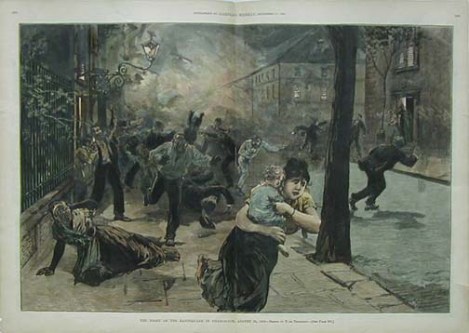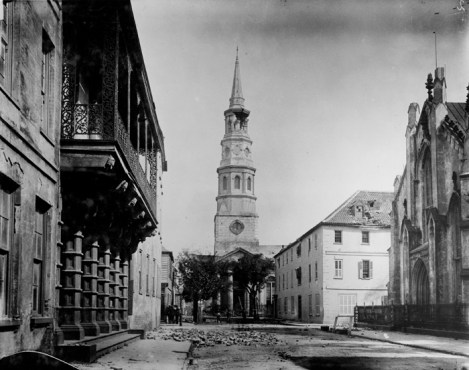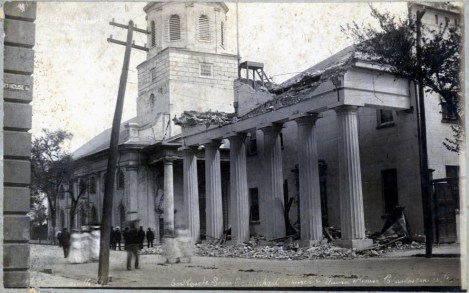 Sarah Bernhardt appeared at the Academy of Music in “La Tosca” on January 21, 1892. Her appearance was treated like that of royalty. A local reviewer for the “News and Courier”, who referred to Bernhardt as “the divine Sarah,” also wrote that the theater “had rarely held as brilliant and cultivated an audience who were spellbound through love, hate, scorn, revenge, and disgust, all of which had full sway in the role.”
Sarah Bernhardt appeared at the Academy of Music in “La Tosca” on January 21, 1892. Her appearance was treated like that of royalty. A local reviewer for the “News and Courier”, who referred to Bernhardt as “the divine Sarah,” also wrote that the theater “had rarely held as brilliant and cultivated an audience who were spellbound through love, hate, scorn, revenge, and disgust, all of which had full sway in the role.”
The two lower floors of the Academy sold out for Bernhardt’s performance within forty-eight hours. The day before, the “News and Courier” warned the audience about the “bonnet boycott” if they were attending.
(From “The News and Courier, Jan. 20, 1892)
Bonnets and Bernhardt do not go together. We do not mean … that the Divine Sarah has discarded the use of bonnets; on the contrary her headgear is said to be perfectly lovely; and we wish to convey the idea to the ladies of Charleston that bonnets will be entirely out of place at the Bernhardt performance … It is suggested that all ladies leave their bonnets at home unless indeed they are small enough not to interfere with the view.“A Sufferer” goes so far as to suggest that it would be entirely proper for the Reporters of the News and Courier to take down for publication the names of all the ladies who go to the Academy wearing any particularly offensive hats or bonnets. Another correspondent “who paid three dollars to see Bernhardt, and not to gaze at ‘Miss Brown’s bonnet’” suggests that the new Chief of Police might distinguish the beginning of his administration by posting a strong force of men at the Academy to keep all the high hats out of the house!
It is true that some ladies have to wear hats as a protection, but the ladies of Charleston never look so sweet and charming as when they display their queenly heads unencumbered by the frippery of the milliner’s art. There is no reason why any lady in Charleston should keep her head covered at the Bernhardt performance tomorrow night.

Academy of Music photo: from “Memories of the Professional and Social Life of John E. Owens, By His Wife.” 1892.
Sarah Bernhardt photo: from Library of Congress

 The following pages are taken from A Descriptive Narrative of the Earthquake of August 31, 1886 by Carl McKinley for the Charleston City Year Book 1887.
The following pages are taken from A Descriptive Narrative of the Earthquake of August 31, 1886 by Carl McKinley for the Charleston City Year Book 1887. 

























